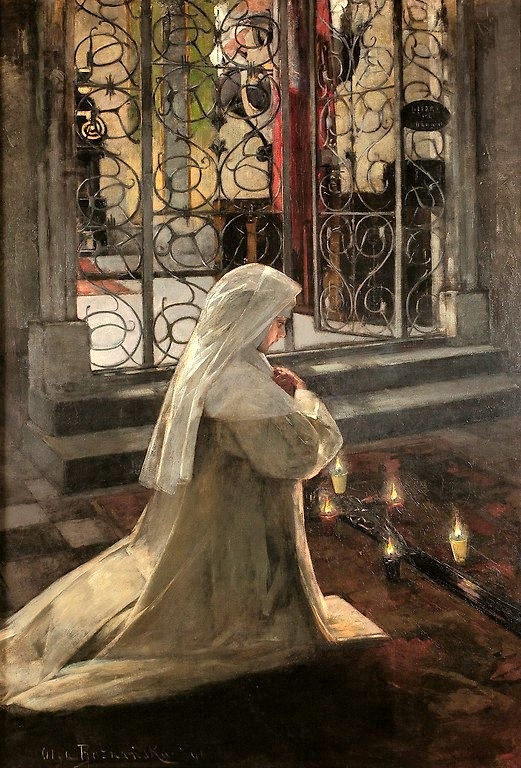Although he is referred to in Scripture simply as an “angel,” we should not imagine that Saint Gabriel ranks merely among the lowest choir, who are given this particular designation. [For the term “angel” is used also to refer to the spiritual beings of any of the orders or ranks of the celestial court in a general sense, not the lowest rank only.] Gabriel certainly belongs to the higher choir of those spiritual beings who are sent to the assistance of humankind—namely, the archangels. Moreover, he has primacy amongst this magnificent and holy choir.
Just as the mysteries with which Gabriel was entrusted to communicate by God were of a special excellence and sublimity, so this legate of heaven is of a particular and distinguished nobility in the celestial hierarchy. He is the faithful and trusted friend of the spouse, to whom was revealed the awesome wonder of the divine Incarnation and the coming of the Word made flesh. And it was he who first revealed this saving mystery to the world. For he was chosen as the special mediator between the most high God and the humble Virgin of Nazareth, between the eternal Word and our human nature.
To understand and appreciate the outstanding dignity of this wonderful archangel, we may consider the importance of the mission assigned to him by God. Furthermore, we should bear in mind that—as many of the saints have noted and affirmed—Gabriel was appointed as a particular guardian to the Blessed Virgin herself. Now God created no other being more pure and more noble in all the heavens and in all the earth than the Virgin Mary. If you consider for a moment how princes in this world always entrust the treasures which are dearest to them to their most faithful and trusted servants, then you will be able to imagine how highly Gabriel is esteemed by God, since He chose to entrust to him His most dear and precious treasure—namely, His beloved spouse and mother, the blessed Virgin Mary.
Consider that it was this glorious archangel that was selected to act as the legate and spokesman for the Holy Trinity in attending to the most important matter which has ever occurred in this universe—that is, the incarnation of the only-begotten Son of God, and hence the redemption and salvation of the world!
For this reason, the name “Gabriel” is most suited to this archangel, for it means “the strength of God.” For it was Gabriel who announced the most strong and unbreakable bond established by the Incarnation—the mystical bond whereby God was united indivisibly and completely with our human nature. Since the divine nature was united with both a human body and soul in the person of Jesus, the Incarnation may be understood as the unbreakable “triple rope” referred to prophetically in Sacred Scripture when it is written, “A triple rope is not easily broken.”
Gabriel very rightly deserves the name “the strength of God” for another reason too. For it was the glorious outcome of his mission as a legate of God to the Blessed Virgin that something of the strength of God was communicated to, and bestowed upon, our human weakness and mortal frailty. Through the grace of the Incarnation, the Divinity was definitively united to our human nature, and human beings, as a consequence, came to share in something of the strength and power of the Godhead. Hence it is that through this strength of God, many of the saints—the apostles and martyrs—came to perform deeds and to endure sufferings in a manner which entirely exceeds the natural limits of human fortitude.
This article is taken from a chapter in Meditations on the Holy Angels by St. Aloysius Gonzaga and translated by Fr. Robert Nixon, OSB, which is available from TAN Books.









